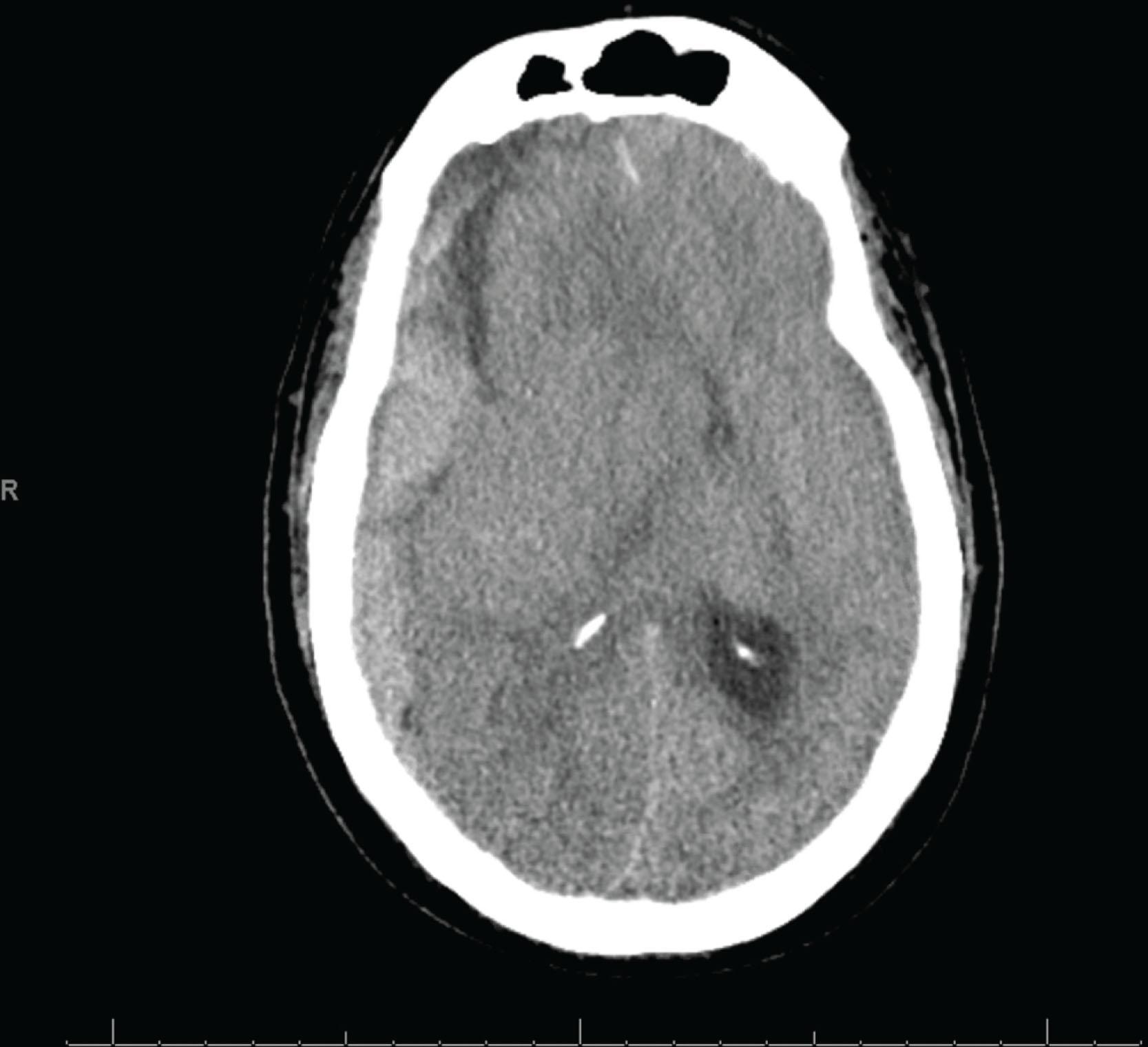Physical Address
304 North Cardinal St.
Dorchester Center, MA 02124
A rapid response event was initiated by the bedside nurse for acute change in mental status of her patient. On prompt arrival of the rapid response team, it was noted that the patient was a 66-year-old female with a known history of depression, alcohol abuse, and CD20 + diffuse large B-cell lymphoma status post six cycles of rituximab, cyclophosphamide, doxorubicin, vincristine, and prednisone along with intrathecal methotrexate and subsequent isolated central nervous system (CNS) relapse currently being treated with pemetrexed, who was admitted to the hospital earlier in the day for the evaluation of a new fever. The patient had reportedly been feeling fine until 30 min before the rapid response event when she called her nurse to report a new headache and feeling of unwellness. Per the nurse’s report, she had found the patient vomiting when she went in for a vitals check, and the patient had promptly become unresponsive after.
Temperature: 99° F, axillary
Blood Pressure: 210/133 mmHg
Pulse: 95 beats per min (bpm) – sinus rhythm on telemetry
Respiratory Rate: 20 breaths per min
Pulse Oximetry: 82% saturation on room air, improved to 92% with 6L O2 with nasal cannula
The patient was a middle-aged lady lying in bed, snoring. She was unresponsive to voice commands and minimally responsive to sternal rub. She had her arms, legs, and neck extended. No spontaneous movements were observed. Pupils were dilated and minimally responsive to light. Cardiac and pulmonary auscultation was benign. An abdominal exam did not elicit any distress in the patient. The patient was also noted to be incontinent of stool.
The neurological findings raised concern for a severe intracranial process. The patient was emergently intubated at the bedside to secure the airway. Intravenous mannitol was administered empirically at the bedside after consultation with the neuro-intensivist. Stat computed tomography (CT) head was ordered, and the patient was transported to the neurosurgical intensive care unit (ICU) after the scan. CT of the head was later reported, which showed a new right-sided 2.1 cm subdural hematoma concerning for hyperacute hemorrhage, as seen in Fig. 36.1 . A 2 cm leftward subfalcine herniation, a new right uncal herniation, and entrapment of the left lateral ventricle were also seen. Neurosurgery was consulted emergently for surgical evacuation of the hematoma per the family’s wishes.

Become a Clinical Tree membership for Full access and enjoy Unlimited articles
If you are a member. Log in here